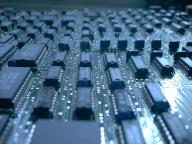ingo's electronics

The extensibility and simplicity of my C64 home computer got me interested in electronics. Though it was fun to write programs that drew functions or fractal graphics on the screen, or moved things around as if by magic, I imagined thrilling applications if I could attach sensors and electric motors to the computer. Most of my ideas centered around home automation (turn on the radio by clapping one's hands, turn on the light when it's too dark), light effects (dot-matrix LED panel) and robotics (build an autonomous vehicle that can move around the room).
Back then, there were no ready-to-use robotics kits (á la Lego™ Mindstorms) yet. Procurement of electronics parts wasn't easy, neither. There was a small electronics shop in the next town, but that was rather intimidating for a young beginner. The best source was the Conrad Electronics electronics mail-order company.
My gateway drug into electronics was the book Hardware-Basteleien zum C64/C128, from the same company that also published the 64'er magazine that I read regularly. The book provided all the information on the necessary tools and skills, and included interesting projects (even esoteric ones like a Geiger counter!) for the C64. I decided to invest most of the money I got on my confirmation for this (and thus against a shiny hifi stereo deck or a satellite TV receiver). My mother just incredulously flipped through the book, read aloud something like …the user port connector must be firmly soldered to the board…
, frowned, and asked me are you sure?
.
my electronics books
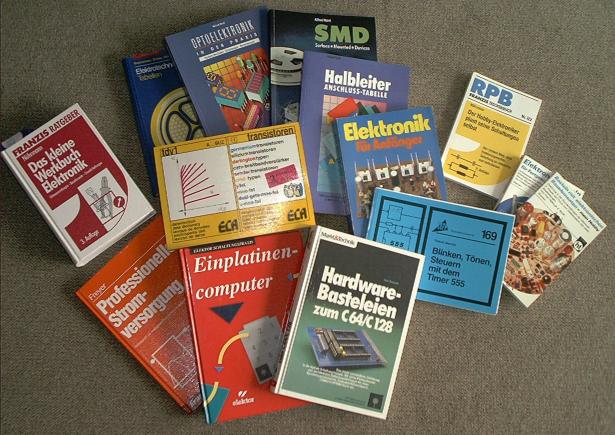 |
Yes, I was convinced that the money would be well spent. In fact, since my early childhood I've been fascinated by electronics: Whenever an appliance in our household broke, I (giddy with joy) ran down to the basement to fetch a screwdriver in order to disassemble the radio, alarm clock, toaster, … outside in the garden, scavenging "interesting parts" from it. Sometimes, I even managed to repair something, e.g. by reattaching broken wires to a hairdryer.
I was supported by one of my friends, who shared my interest in the C64. Being two years older, he intended to start vocational training for (and later actually became) an electronics technician after finishing school. So he approached this from a more practical, I from a more theoretical starting point.
Later, during my studies of information technology, all the knowledge about and dexterity with transistors, ICs, circuit boards and the soldering iron proved to be of immense value. I was able to build on top of my years of practice in amateur electronics, and finally gained the theoretical foundations to the practical knowledge I already possessed.
some of my electronics creations
 |
I started small, building small circuits consisting of a few transistors and (always, for the effects!) LEDs, mostly on a breadboard with copper lines and drilled holes. A big milestone was the etching of my first circuit board, for which I had to restructure my children's room into a small electronics lab, lending my parents' medial sunlamp as for UV lighting, and photographic dishes for the various liquid solutions.
My first self-etched board was a simple two-transistor flip-flop; I created the layout with a painting application on the C64, using self-made stencils for the soldering pads, and carefully scaling the 320x200 pixel (hi-resolution for the C64!) bitmap so that it would print in the correct size on the 9-dot matrix printer.
my first self-etched board: a simple flip-flop
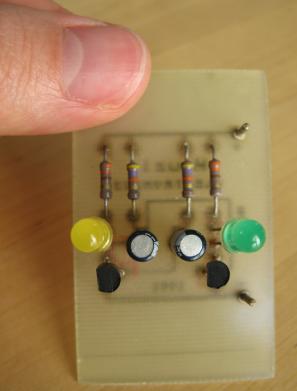 |  |
a timed light switch on a breadboard
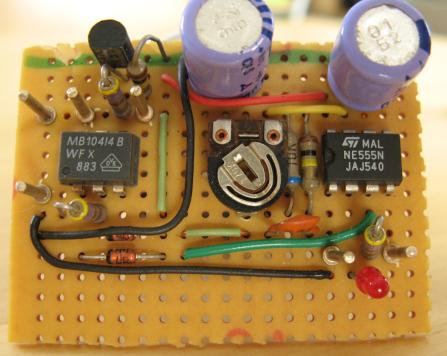 |
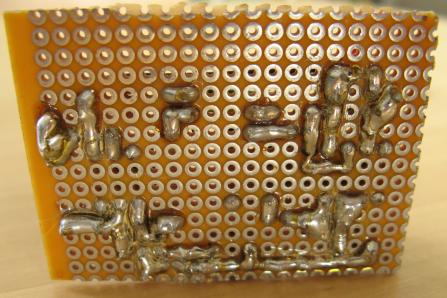 |
finished circuit board of a 24-port extension for the C64 user port
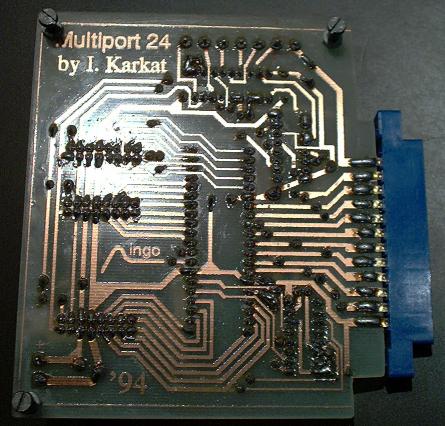 |
drilling tiny 0.8 mm holes into the printed circuit board
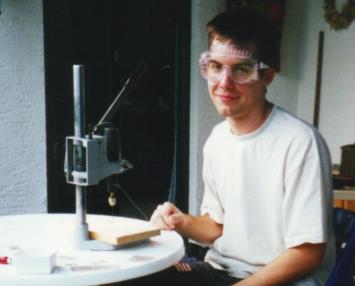 |
Serial-to-Parallel circuit diagram
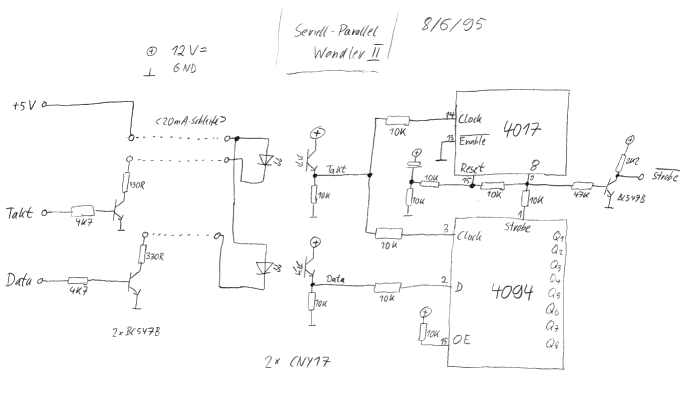 |
Serial-to-Parallel layout and component plan
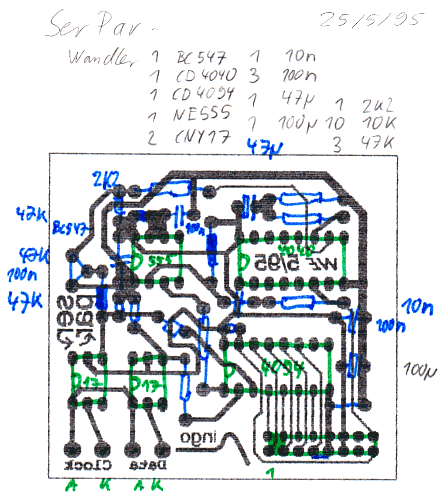 |
Serial-to-Parallel component side
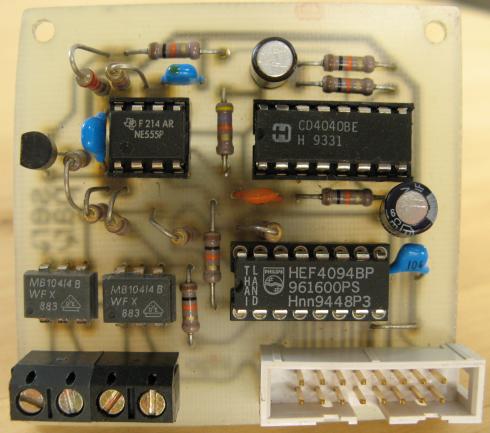 |
Serial-to-Parallel soldering side
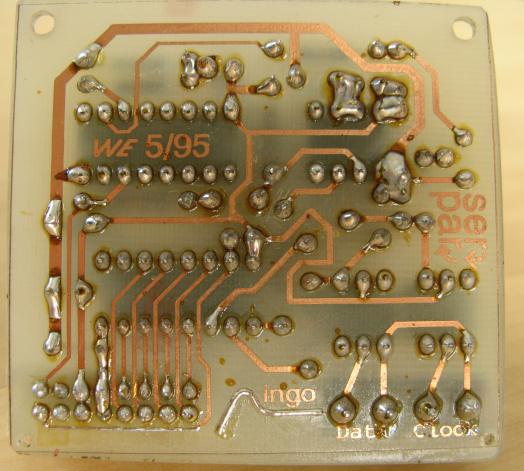 |


